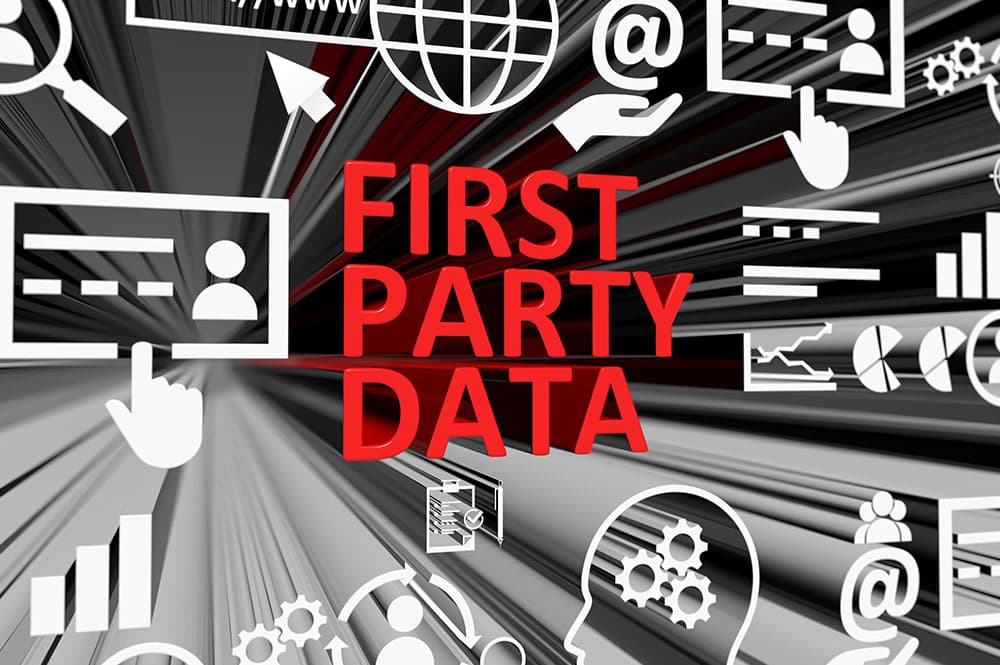Love it or hate it, donor data is crucial to the success of your fundraising efforts. In a digital world, effectively collecting and using donor data is the key to your nonprofit’s future growth. It will help you better understand your existing donor community and identify new potential donors.
So, what if your ministry or organization could gain access to some of the most valuable fundraising data in the world?
You can! It is called first-party data, and it is available to you right now. First-party data is information that you collect directly from your audience or donors—like their names, email addresses, phone numbers, birthdays, occupation, interests and more. This data is extremely valuable to ministries because it can be used to target individuals with campaigns who are already interested in the mission of the organization and resources such as books, e-books, and DVDs.
Over the past decade, nonprofits and ministries have been able to consistently rely on platforms such as Facebook to run successful digital fundraising campaigns. Success experienced on these platforms has primarily been due to their ability to utilize third-party data to quickly and cost-effectively narrow down target audiences that are most likely to respond to the desired conversion.
However, things are getting more difficult when it comes to utilizing third-party data. Advertisers are beginning to see limitations placed on the ability to target campaigns based on third-party data on platforms such as Facebook. Compliance regulations such as the General Data Protection Regulation (GDPR) in Europe and the California Consumer Privacy Act (CCPA) are a foreshadow of future widespread regulatory efforts to protect consumer data. Recently ministries and nonprofits that advertise on Facebook have also had to navigate the ongoing ban on all ads about social issues, elections or politics in the United States, plus Apple’s impending AppTrackingTransparency Framework (ATTF), which will significantly impact Facebook’s ability to track, optimize, target, and report on web conversion events.
These changes in how third-party data is collected and how it can be used is making first-party data that much more valuable.
But here is the thing: most organizations do not prioritize strategies to collect and organize first-party data, let alone understand how it can be utilized to help fund their organization’s mission. That means there is a huge opportunity for organizations that do understand first-party data and want to leverage its power.
Do you want to get ahead of the curve? Here are four ways to begin collecting first-party data for your ministry or organization.
1. Google Analytics
You may be familiar with the ability of Google Analytics to provide website statistics such as visitors, page views, and most viewed pages. Did you know that you can also uncover valuable first-party data about your audience? You can find out not only demographic information like age and gender but also affinity interests, language preference, location and more! This data can be used to create remarketing audiences for future advertising campaigns. It only takes a few minutes to have Google Analytics up and running on your website and is a quick first step to gain valuable insight about your supporters.
2. CRM Database
Your organization’s customer relationship management database is already filled with valuable first-party data that can be integrated into your fundraising campaigns both offline and online. For instance, the addresses of your current donors can be used in addressable geofencing campaigns to deliver video ads right to their homes on streaming platforms such as Hulu and YouTube. You make it a priority to keep an up-to-date database; make sure you are maximizing its potential to support your mission.
3. Polls, Quizzes and Surveys
By strategically using polls, quizzes and surveys, you can gain insightful information about your audience. These tools are easy to push out through existing platforms such as your email list, website, or social media sites.
4. Audience Extension
Organizations can utilize Audience Extension to aggregate their web visitors into a larger audience that can be reached through strategic digital advertising retargeting campaigns. The exciting advantage of Audience Extension is that the first-party data from this aggregated audience can be paired with big data filtering technologies to reach the exact segment of your audience that you want to reach—cost-effectively. For example, if a ministry is releasing a new book designed for stay-at-home mothers with young children, they could quickly utilize their first-party audience to run a digital advertising campaign targeted to women of a specific age range that are avid readers, with children under a specific age. Getting started with Audience Extension from Inspire Ads is free. You can learn more at InspireAds.co.
The digital landscape is constantly shifting! Don’t let current and future changes to Facebook, Instagram, and Google slow down the success of your organization’s digital marketing efforts. Take control and begin to leverage the power of your own first-party data.
Let Infinity Concepts help you with all your digital advertising needs.
CLICK HERE or call us today at 724-733-1200.
- Four Steps to Amplify Your Ministry’s Message with Video Marketing - June 28, 2024
- Maximize Your Impact: Why Landing Page Conversion Rates Matter - April 12, 2024
- From Google to Social: How Gen Z Is Shaping the Future of Search - February 2, 2024

